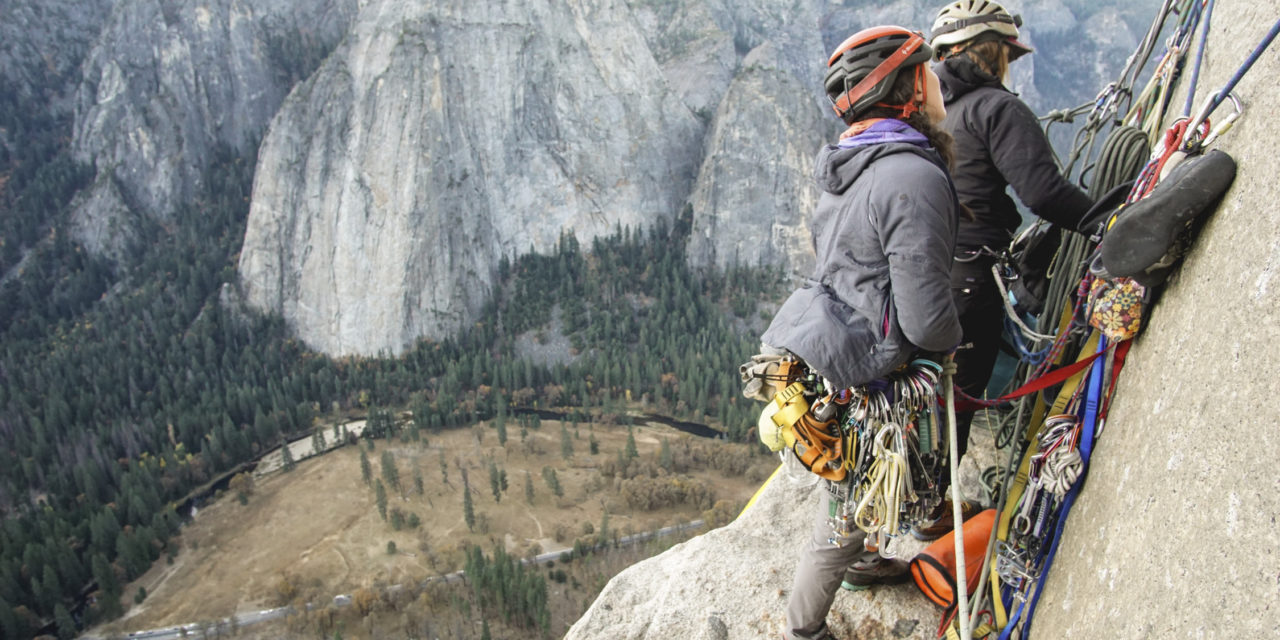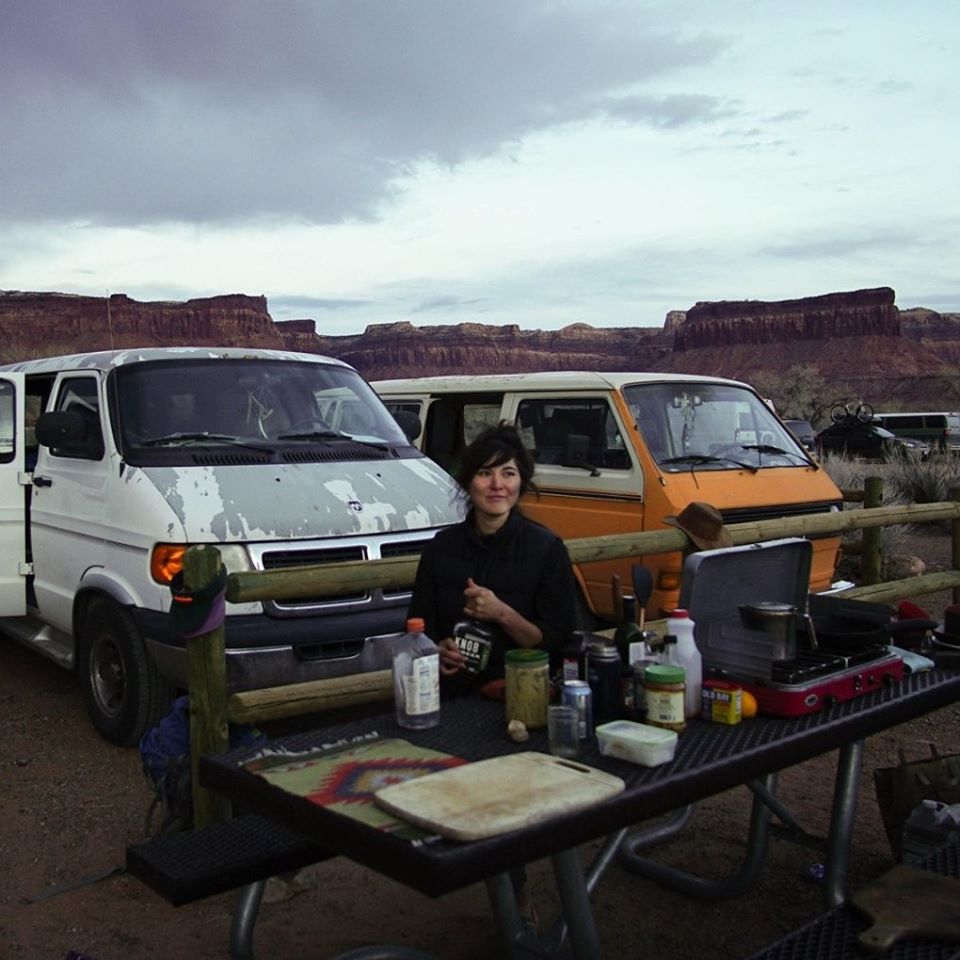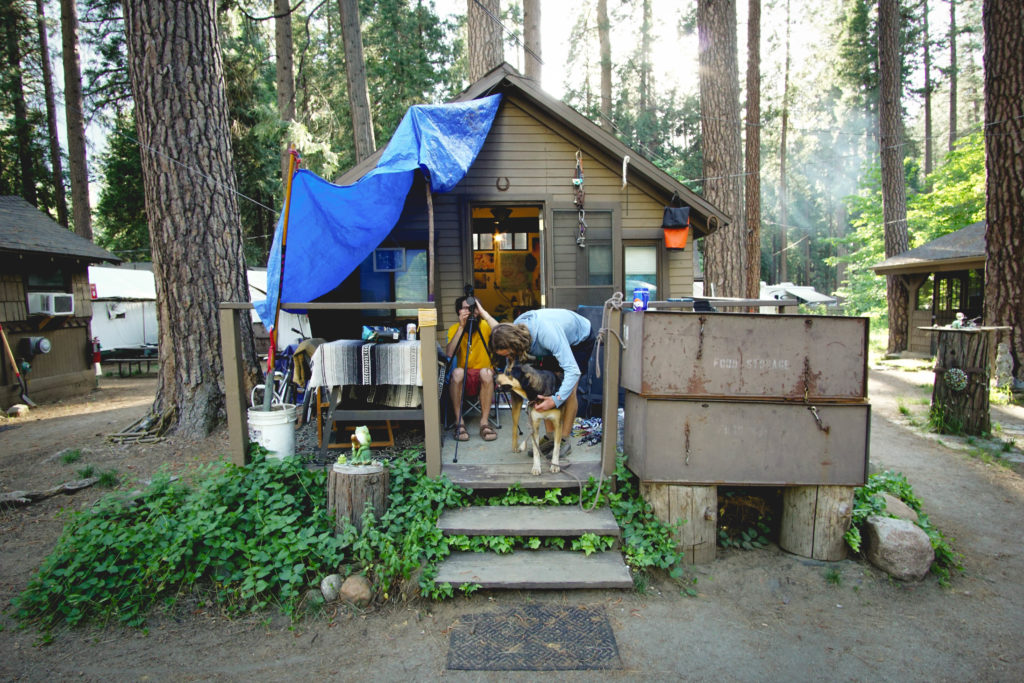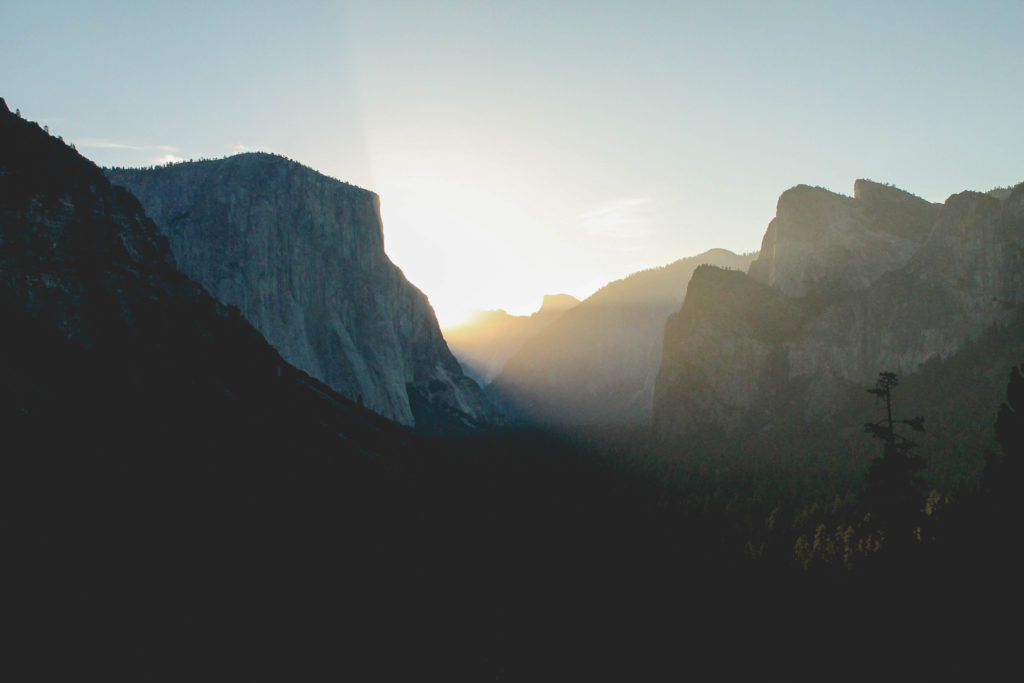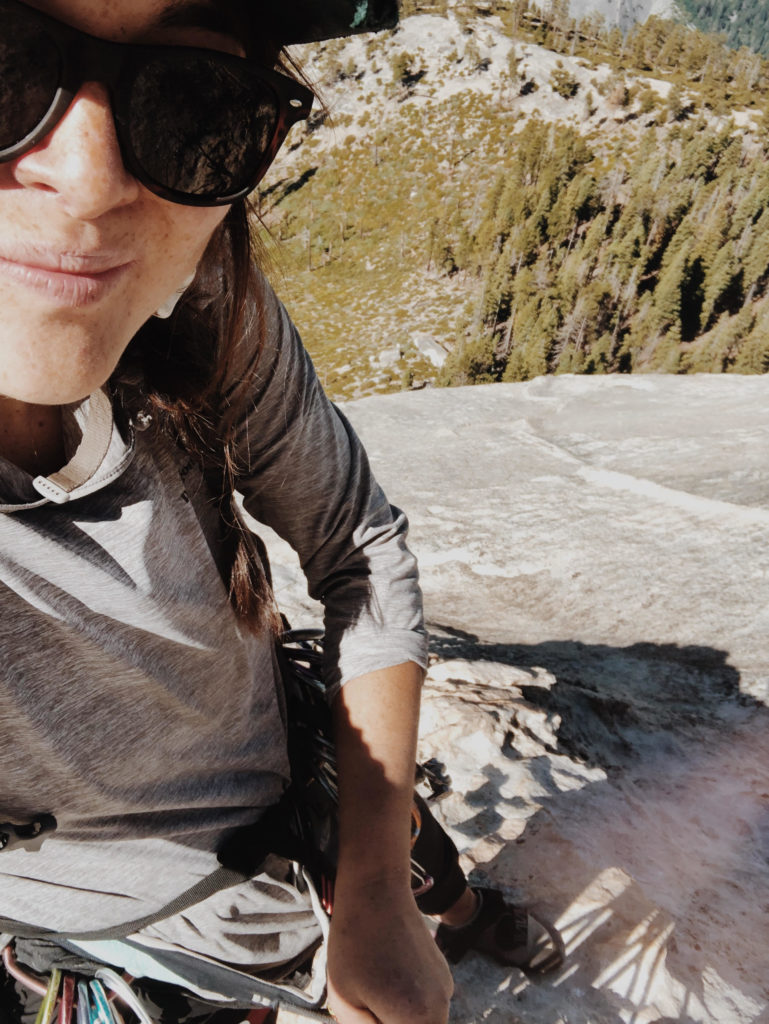We look at women in outdoor communities and we see a great deal of self-confidence. Climbing boulders, summiting mountains, and skiing the backcountry are all endeavors that have historically been pursued by and advertised to men. Naturally, the women who choose these pursuits tend to be independent, driven, and tenacious. But as encouraging as it is to see women out there crushing, it doesn’t mean these women are unaffected by gender inequality. We still live in a world with explicit, systemic issues such as unequal pay, male-dominated politics, and laws that allow men to dictate womens’ biological rights, just to name a few.
Even if we have positive influences around us and support from men and women alike, we can unknowingly absorb problematic messages around us and take them to be our own beliefs: “I’m not good enough.” “I don’t belong here.” “I shouldn’t make anyone feel uncomfortable.” If we don’t overcome the cultural biases, we’re liable to blame ourselves for not being stronger, smarter, thicker-skinned. My interview with Miya stands as one more GO FOR IT to counteract the temptation to hold back. She hits you with this beautiful honesty to help you understand that you are not alone in grappling with self-doubt, it’s okay if you need support from friends, and your dreams may very well be right around the corner. Miya shares how she was able to move past feelings of self-doubt to not only apply for, but ultimately land the job of her dreams.
Sara: Tell me about the work you do–what does it mean to be a climbing guide?
Miya: I’m a climbing guide for the Yosemite Mountaineering School in Yosemite National Park, which is home to some of the country’s best multi-pitch climbing. When I guide I typically take people out on fun, classic routes with great views and moderate climbing. I also teach classes. Some days I show new climbers how to tie-in, rappel, and belay. Other days I teach more advanced climbers techniques that will help them climb the notoriously difficult slab and cracks of our glaciated valley.
Guiding in Yosemite is unique in that we have everything from single-pitch terrain, to moderate multi-pitches, to big walls and even alpine climbing. The Yosemite Mountaineering School guides it all, which means we need to be more versatile than guides in many other places.
Sara: Tell me about your journey to becoming a climbing guide. Where did you get the idea? When did you know you wanted to do it?
Miya: I started working for the Yosemite Mountaineering School in the 2019 season. I had already been working in Yosemite for the past four years. I worked cash registers, bussed tables in the Ahwahnee Hotel, and worked in Tuolumne at the lodge all in order to live frugally, make money, and climb all the time.
Eventually, I started to question what my goals were and if working low-paying jobs in the park to sustain the climbing lifestyle was really worth it. I’d always thought that working a climbing-related job would be a dream, but never really thought I was good enough to apply for a position.
One of my friends who was already working as a guide encouraged me to apply, and honestly, that gave me the confidence I needed to go through with it. I wish I could say that the confidence came from myself, but the mountaineering school is full of really accomplished, badass Yosemite climbers, and it was hard to see how I could really be worthy of joining their ranks. Having my friends and climbing partners encourage me gave me the confidence to follow through and apply, and I got the job.
Sara: Are there any particular challenges or opportunities you’ve noticed that come with being a woman in this male-dominated industry?
Miya: It is interesting to me how male-dominated the climbing guiding industry remains to this day. I know so many strong, capable, and smart female climbers, yet among these women there is a definite lack of interest in guiding as a career. There are probably a lot of women out there who are more than capable of being a guide, yet have the same hesitations I did at the prospect of stepping into a male-dominated industry. I definitely had to deal with hearing the murmurs among my peers that since I was applying, I was somehow lowering the bar for the coveted position to “just any girl who can climb.” I was not exceptional in climbing in key ways. I don’t have all my AMGA certifications, I don’t climb 5.13, and I don’t have speed records on El Cap–so why was I applying? How could I be good enough?
It was hard enough to already feel those insecurities within myself, but it hurt a lot to know that other people were thinking it too. I definitely felt the spotlight and the scrutiny and it was hard to deal with. I knew I wasn’t exceptional. I knew I was probably being hired because they needed another female guide and not for my climbing resume.
But in the end I thought, fuck it, I’ve climbed dozens and dozens of moderates, classic and obscure, all over the park, I’m good with people, and I have the technical skills required to do the job. All of that put together is what is ultimately going to determine whether I am a good guide, not the fact that I haven’t climbed El Cap in a day (yet)!
After the initial feelings of doubt passed, I had a great season, never felt anything but support and respect from my male co-workers, and had the other female guide, Miranda Oakley, to look up to as a friend and mentor.
More and more clients are requesting to have a female guide these days, so I expect and hope that there will be more women who are interested in entering the field soon. Our guiding service has about 15 climbing guides, but Miranda and I are the only female guides for now. I think that’s pretty typical industry-wide. But there are so many young women getting into the sport, and it feels really good when they realize that their guide is a woman, and they are psyched to have that experience. I’ve had nothing but respect and admiration from my clients honestly, and feel really lucky to have had such an awesome year meeting people of all ages and skill-sets who are beyond stoked to be learning and climbing. It makes me feel really lucky to do what I do.
Sara: What advice do you have to girls and women who dream of becoming a climbing guide or other kind of professionals in the climbing world?
Miya: My advice would be to not sell yourself short. It’s so easy to feel imposter syndrome–to feel like you’re not good enough or strong enough or accomplished enough. But since when were any of those things a requirement for the job?
If you are confident in the mountains, know your shit, understand how to be safe, can reliably climb a certain grade, and are also a people person, then that’s it–that’s all you need. Now go kick down that door and get yourself that job. In the end you’ll realize that most of the guys don’t climb 5.13 either, that your resumes are pretty similar anyways, and that we NEED more women in this industry–you are WANTED!
I think the biggest barrier for women in the male-dominated climbing industry in general is just taking that first step. It sucks that we still have to deal with the judgment and the scrutiny. It really feels like we should be past all of that already, but apparently in 2020 we aren’t, so we have to do what we already do in climbing: be bold and take the chance.
Sara: I’ve seen some of your photography and your work is truly captivating. How has being outdoors influenced your art?
Miya: Even in my former, pre-Yosemite life, I’ve always carried around a camera. Mostly a cheap one, mostly on the auto setting, but I always loved capturing images from life and travels. Coming from an artistic background of drawing, painting, and photography, I always knew I had an eye for composition. Those photos were originally just for me, or my friends and family, and it was like that for a long time.
But this past year I decided I wanted to take my passion to the professional level. Taking captivating photos in Yosemite almost feels like cheating – it’s hard to take a bad photo in a place like that!
But I try to take the next step and capture something less clearly tangible than the landscape itself: the climbing lifestyle that I am so involved in. Capturing those authentic moments sometimes means hauling the camera bag up El Cap, or knowing that the moment a friend peers through a spotting scope at Half Dome from the front porch of the cabins we live in is worth documenting.
I’ve definitely never been more inspired by a landscape than when I moved to Yosemite and the Eastern Sierra, and it’s really nice to have the contrast of the wide open spaces of Bishop, my winter home, versus the dramatic corridors of the valley when I move back there for the summer season. Authenticity is really important to me in my photography, and all of my photos, climbing or otherwise, capture a real moment. I consider it half journalism and half art. Or that’s what I aim for anyways.
Sara: How can other climbers and photographers connect with you?
Miya: My photography is posted at www.miyatsudome.com where I also include information about myself as a guide. I’m pretty active on Instagram, and have even had clients looking for a climbing guide find me there (@miyatsudome). If you’re into climbing, lifestyle, and landscape photography, give me a follow! Likewise, if you’re looking for a guide to take you up your dream routes in Yosemite, or have any questions about guiding, give me a holler!
Miya’s story helps us to understand that self-doubt is not the end of the story, but just the beginning. We can confront that self-doubt, examine its roots, and angle ourselves toward a more accurate perspective: “Do I REALLY believe I’m not good enough? Or is that a story I was told? Can I tell a more interesting and beautiful story?” There are enough obstacles in this life as it is. It will do no good to hold ourselves back. So take things in a better direction. Go gather your friends and talk about your dreams–the more impossible they feel, the better. You get to write this story.
Explore More
Related articles you'll love- A Hard Truth About Professional Climbing by Alice Hafer
- How to Become a Certified Guide
- Destination Guide: Yosemite Valley, California
- Sport Climbing Gear Checklist – Do You Have Everything You Need to Climb?

